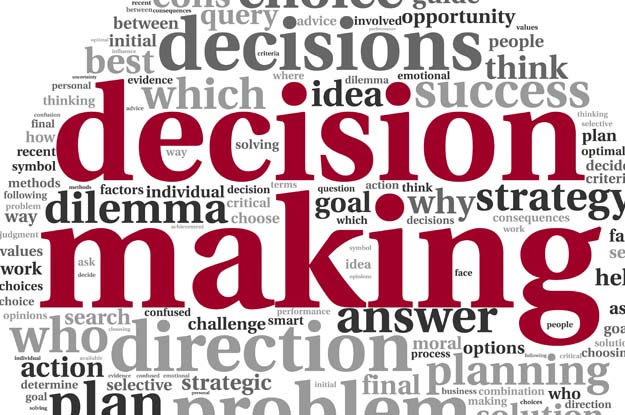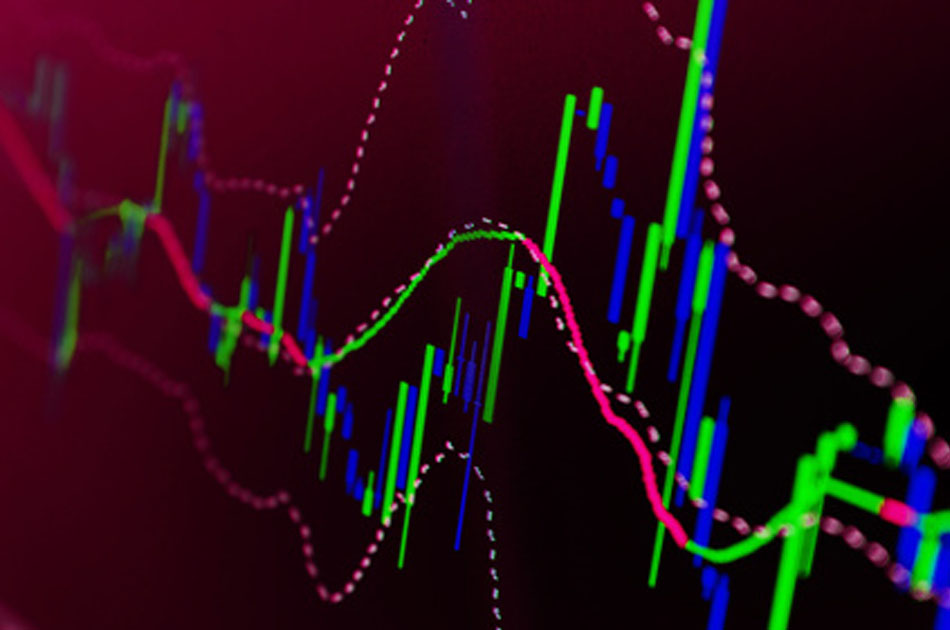Too many traders, trading psychology means dealing with negative emotions like fear and greed. We all know that negative emotions can cause trading difficulties. However, many of us don’t know that the way we think can cause big problems, too. We can be blind-sided by our thinking and decision making—especially when we use our normal, everyday problem-solving approaches in trading. These are traders’ mental blind spots, and they crop up in every trader’s trading. The irony is we usually don’t even know we are thinking in a faulty manner.
Your Psychology Affects Your Decision-Making
Let’s start with an everyday example. It will highlight how our normal decision-making—when brought into trading—can cause poor trading decisions and unforced errors.
Assume we are traveling and are in an unfamiliar town. We are driving along, it’s 6:00 PM, and we’re hungry. We see a restaurant. We pull in and survey the situation. We see a few cars parked in the lot. The building has been freshly painted and the landscaping looks attractive. We notice a few people coming out the door. They are smiling and seem happy. We think to ourselves, “This looks like a good place to eat.” We park the car and go inside to dine.
Notice carefully how this decision was made. We didn’t sample the food to see if it is to our liking. We didn’t interview the patrons coming out the door to confirm that their smiles had to do with the food and pleasant dining experience. We did none of this. Instead, we used a decision-making shortcut and based our decision on mere appearance. A few cars in the parking lot, a nice looking building, and a few smiling people gave the appearance that the restaurant serves tasty food.
Mental Blind Spots In Trading
Now, let’s bring this into trading.
A trader sees a bull flag in her favorite market. As most traders will know, a bull flag is a continuation pattern in an uptrend. Because the expected resolution of this chart pattern is for higher prices, the traders think, “this is bullish,” and takes a long position.
But mere appearance can be deceptive. Again, we are using a decision-making shortcut, which may be adequate in choosing a restaurant, but can be disastrous in trading.
If the bull flag is occurring at the top of an overextended rally or in higher time frame resistance, the bullish chart pattern could be the start of a market reversal. Rather than signaling continuation of the rally, it could very well be the start of distribution. This trader could suffer a loss rather than the profits she envisions from higher prices that she believes the bull flag will generate.
Today’s Webinar: Traders’ Mental Blind Spots: How Hidden Flaws in Your Decision-Making Affect Your Tradinghttps://t.co/0KWxtImJQt pic.twitter.com/5GmfzcQbly
— livetradingchallenge (@takethe_ltc) November 17, 2016
Substituting An Easy Question For A Harder One
How we are making the decisions on both the restaurant and the bull flag is important to understand. In both cases, we are mentally substituting an easy-to-answer question for a harder one. For both, the easy question of appearance displaces a more complicated question that never gets asked.
“Does this restaurant look like a good place to eat?” was the only question asked. The easily made response was, yes. In the trade situation, the easy question was, “Does the chart show a good match for a bull flag pattern?” It was easy to determine whether or not the chart matched the flag pattern.
But the superficial appearance of the restaurant does not tell us whether or not it prepares food we want to eat. We never thought to ask, “Will the food be to our liking?” That’s a much harder question to answer. In the trade, we only ask ourselves if the price action is a match for the flag pattern. The harder, appropriate question is, “What is the likely next move of this market?”
Mental Shortcuts are Natural But Can Blind-side Us
Most of the time, we don’t realize we are entering a mental blind spot when we use a decision-making shortcut. Cognitive scientists believe that the use of mental shortcuts is an evolved ability that has helped the species survive and thrive. If we had to take the time to survey the patrons and sample the food each time we entered an unfamiliar restaurant, we might never get to eat! Mental shortcuts do have value. Because they are efficient and do produce good enough results most of the time, we naturally default to their use. In situations like trading that involve risk and uncertainty, however, more thinking is needed. The use of a mental shortcut can lead to unforced trading errors. Such shortcuts become biases that often adversely affect our trading outcomes.

Mental Blind Spot: Recency Effect
When we use mental shortcuts in making decisions, our mind frequently latches onto more conspicuous information. The recency effect provides a good example. When our minds are operating under the influence of the recency effect, we overweight the latest events or newest data. If the morning call is the last information we looked at before the market opens, we can be unduly biased by that information, simply because it is the latest of our data points. Recency can affect traders in other, less obvious ways, as well. For example, if the last three trades have produced losers, the next setup might be passed with the trader thinking, “I’m on a losing streak; I better wait for a perfect setup.” That’s faulty thinking because not only is the trader overweighting recent events, he is also thinking that the previous trades somehow have an influence over the current trade, which, of course, they don’t.
Mental Blind Spot: Confirmation Bias
Confirmation bias is another mental blind spot. We tend to look for information that supports what we already know and ignore the information that disapproves what we know. A trader who sees a signal on the MACD might also check the RSI “to confirm” the signal, but these indicators essentially provide the same measure. The danger here is becoming overconfident. With two indicators signaling, the trader may think, “this is an especially good setup,” and oversize the position.
Traders’ Mental Blind Spots
|
Mental Blind Spot |
Description |
Steps to Take |
|
Appearance Bias (aka representativeness bias) |
The natural tendency to base decisions on conspicuous features of a situation but that doesn’t address the central question |
Learn mindfulness skills to be able to step back from and assess one’s thoughts and determine if they are adequate in addressing the situation
|
|
Recency Effect |
Overweighting of recent information, trading patterns or events and expecting them to continue into the future
|
Make a special effort to look beyond recent events |
|
Confirmation Bias |
Looking only to information that supports a decision |
Seek out information contrary to the initial decision
|
What Traders Can Do
Appearance, recency, and confirmation biases are examples of mental blind spots that can adversely distort trading decisions. Fortunately, there are several countermeasures traders can take which can check and lessen the impacts of our mental blind spots:
- Develop the key mental skill of mindfulness. Mindfulness will significantly help the trader be aware of the decisions being made and how they are being made at the time they are being made. Mindfulness will help us expend the right mental effort rather than accepting a flawed mental shortcut that blind-sides us.
- Keep personal metrics on your trade setups. This will help you avoid making important trading decisions based on recent performance.
- Ask disconfirming questions to counterbalance confirmation bias. For example, if you get a signal to buy, ask about supply in the market. Was the last pullback on lighter volume and smaller price bar range and did your indicators maintain a bullish tone on the pullback? This disconfirms the presence of selling and strongly adds to the bullish signal.
#####
Related Reading …
Three Questions With The Power To Transform Your Trading
To learn more about Dr. Gary Dayton, author of Trade Mindfully, please click here
Traders’ Mental Blind Spots: How Hidden Flaws in Your Decision-Making Affect Your Trading
Read Next Article: Investor Alert: Don’t Lose Money In This Wall Street Scam




